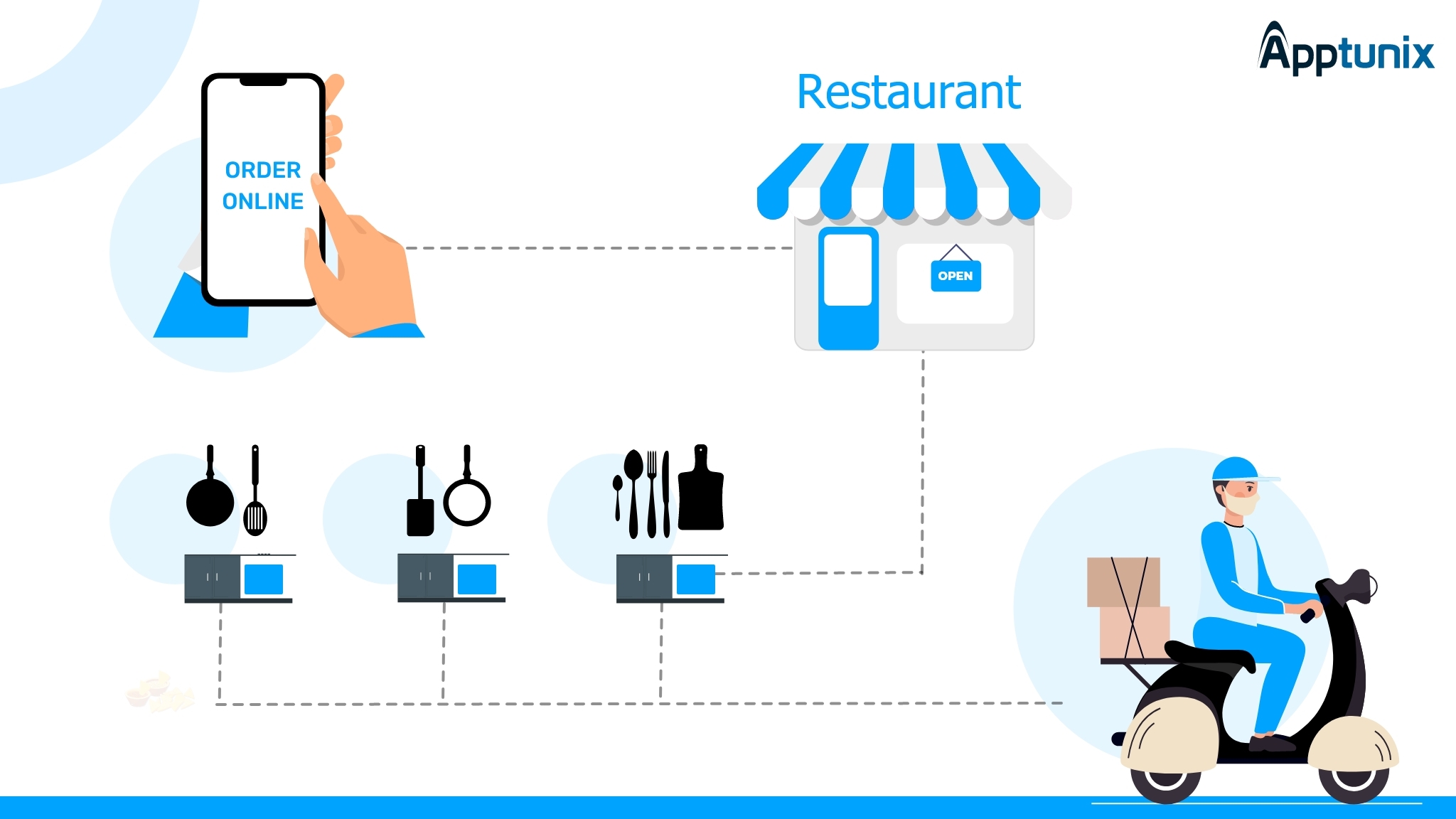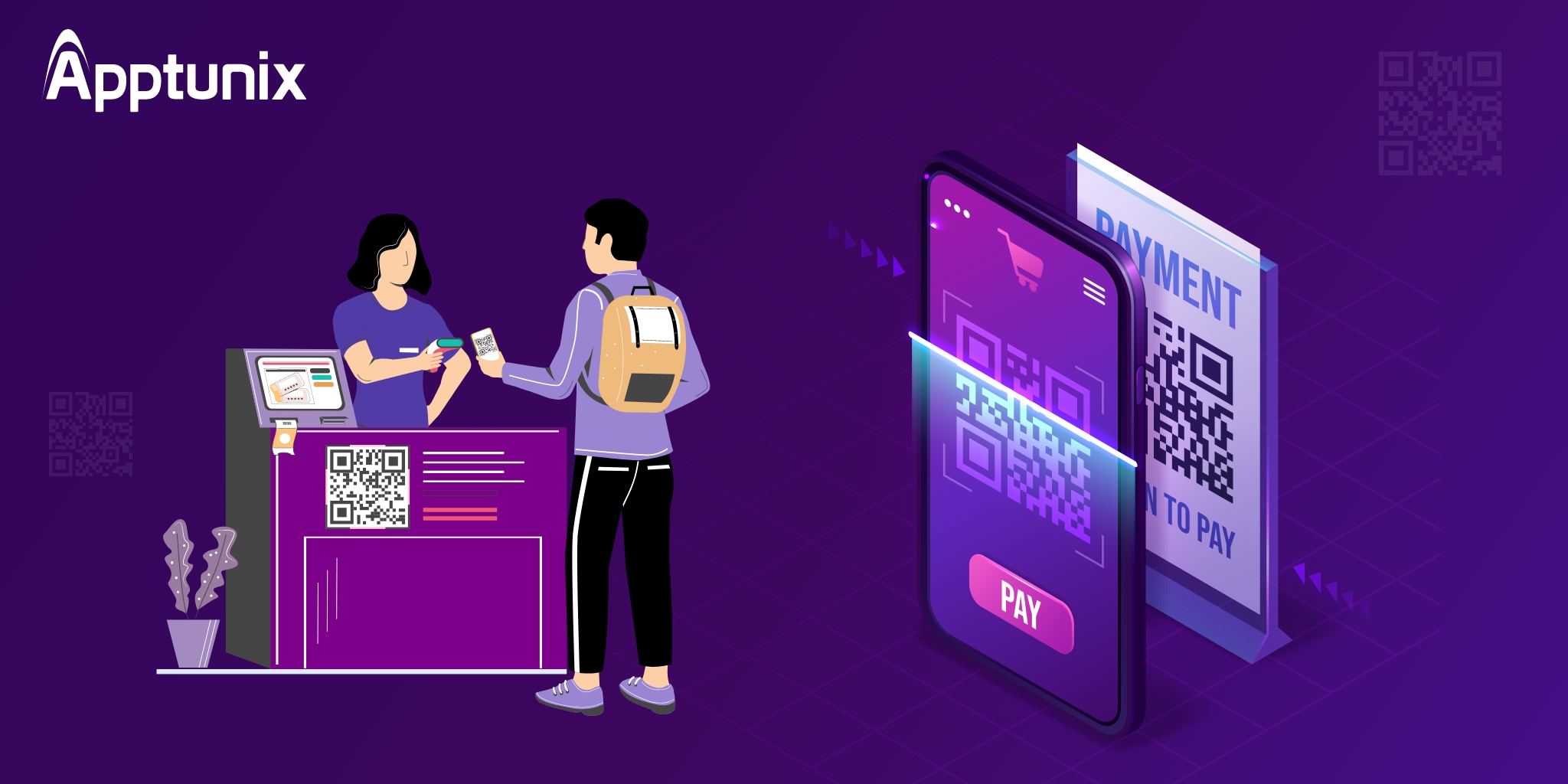Don't miss the chance to work with top 1% of developers.
Sign Up Now and Get FREE CTO-level Consultation.
Confused about your business model?
Request a FREE Business Plan.
What Impact Will the On Demand Economy Have on Your Business?
Table of contents
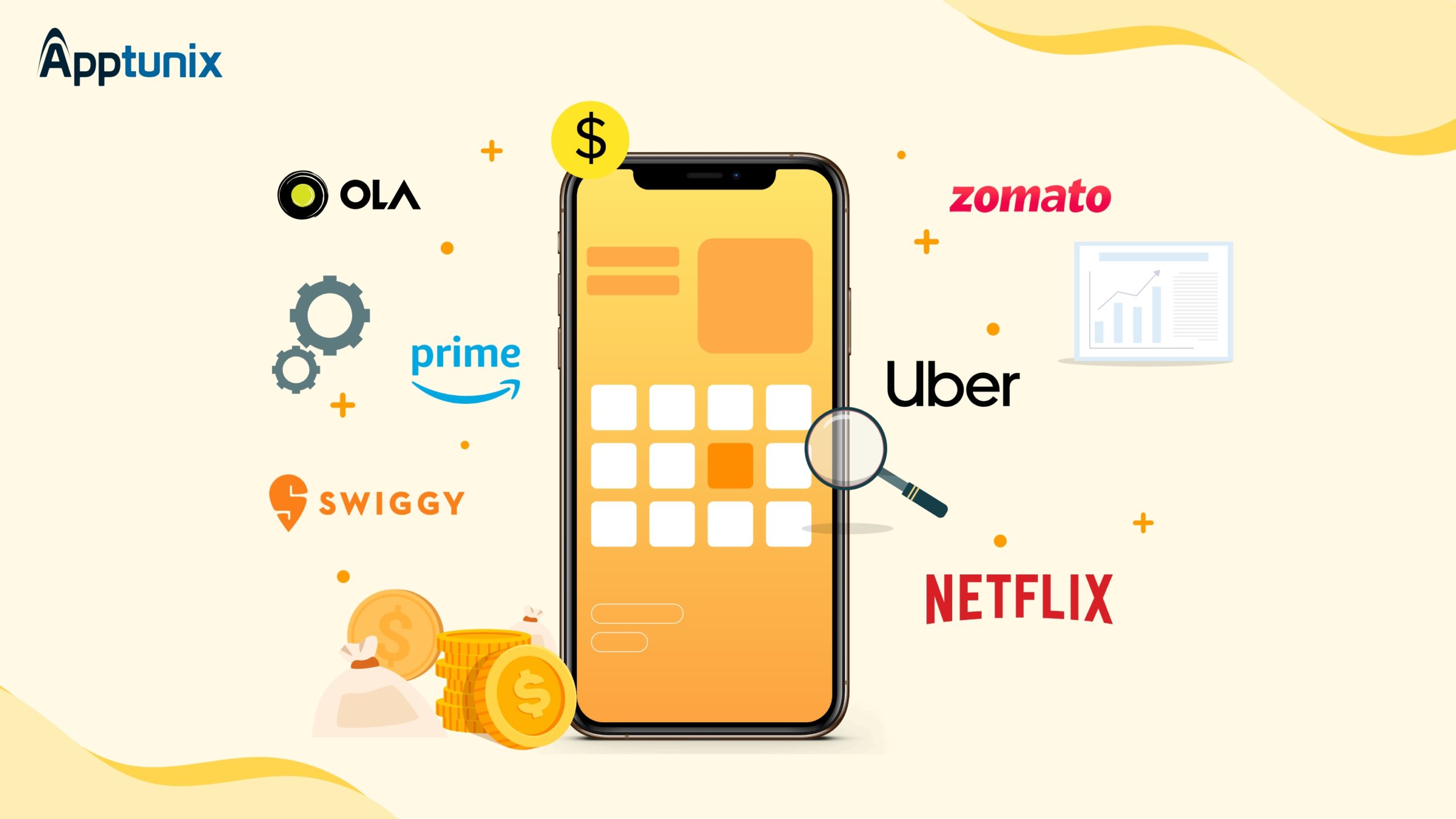
The on demand economy has filled immensely lately by joining an on demand plan of action in different enterprises. Serving shoppers by understanding client needs is the superb focal point of the on-request plan of action.
The on demand economy isn’t going away anytime soon. By the end of the day almost everyone else reading this would have used or would use an on demand service. Our engagement with on demand economy is only growing more ironclad, whether it’s on demand entertainment, purchasing fashion or consumer items on eCommerce websites, groceries, or even food delivered directly to our doorsteps.
The on-demand economy has revolutionized the way businesses service customers, making it the most well-known business model of this decade.
What Is On Demand Economy?
By providing fast access to products and services, an on demand economy helps to meet customer requirements.
Restaurants, grocery shops, transportation, retail, and healthcare are among the areas where on-demand services are gaining appeal.
On demand services are created using mobile technologies in order to give your on demand service while you are on the go.
The on demand economy is developing at an extraordinary pace as consumer behavior shifts to value rapid, simple, and efficient services. Convenience, quickness, and simplicity are key priorities for customers trying to get their needs satisfied.
The convenience of filling free time and choosing one’s hours is particularly appealing to individuals with abilities that can fulfill rising consumer demand.
Annual On Demand Economy Breakdown
The on demand economy is a business concept that ties together digital technology and services.For those who are unaware, the on demand food delivery sector has one of the greatest market shares in the economy, with a value estimated to reach $161.74 billion by 2023
According to a PwC report, the on-demand market will be worth close to $335 billion as an economy by 2025. Not only that, but on-demand consumers jointly spend $56.7 billion every year on on-demand products and services.
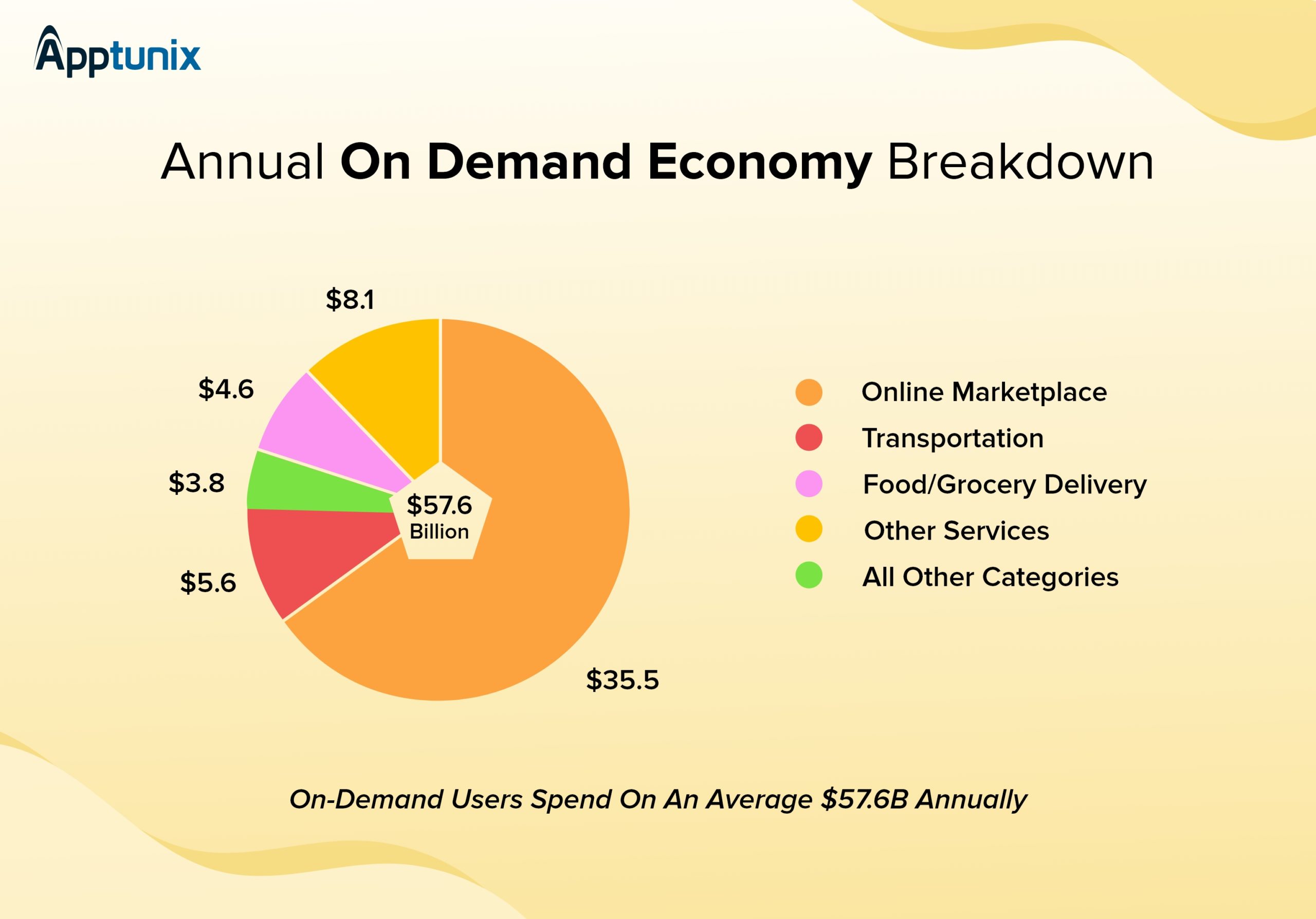
Consumers in the U.S spend $57.6 billion each year on the on-demand economy to serve 22.4 million customers, according to Statista
The market for on demand mobile apps is expected to reach $335 billion by 2025, according to PwC research. The on-demand economy has a lot of promise to survive future pandemics.
On-demand app development continues to flourish across all geographies and industry sectors, whether it’s for on demand education, telemedicine, shopping, or food delivery.
How The On Demand Economy Works
The on demand economy works by taking a service, such as food delivery, hairstyling and cosmetics application, or handyman repairs, and connecting providers and customers through technology.
This connection is often made via a technology service, such as a website or smartphone app, with both participants creating accounts in order to utilize the service. When a consumer requires a service, they access the app, enter their criteria, and send a request to connect with a service provider.
The service provider is then notified of the service request via the application and heads out to complete the work for the consumer. Payment is usually made through the technology business when the service is completed.
As the technology business operates as a middleman and safeguarder of personal information, this guarantees that no personal information is shared between parties. Following service, both parties are asked to offer comments and ratings for one another in order to develop the system and assure service quality.

Benefits of the On Demand Economy
Because they successfully match consumers’ desire for flexibility and give rapid access to information, on demand solutions are popular and profitable.
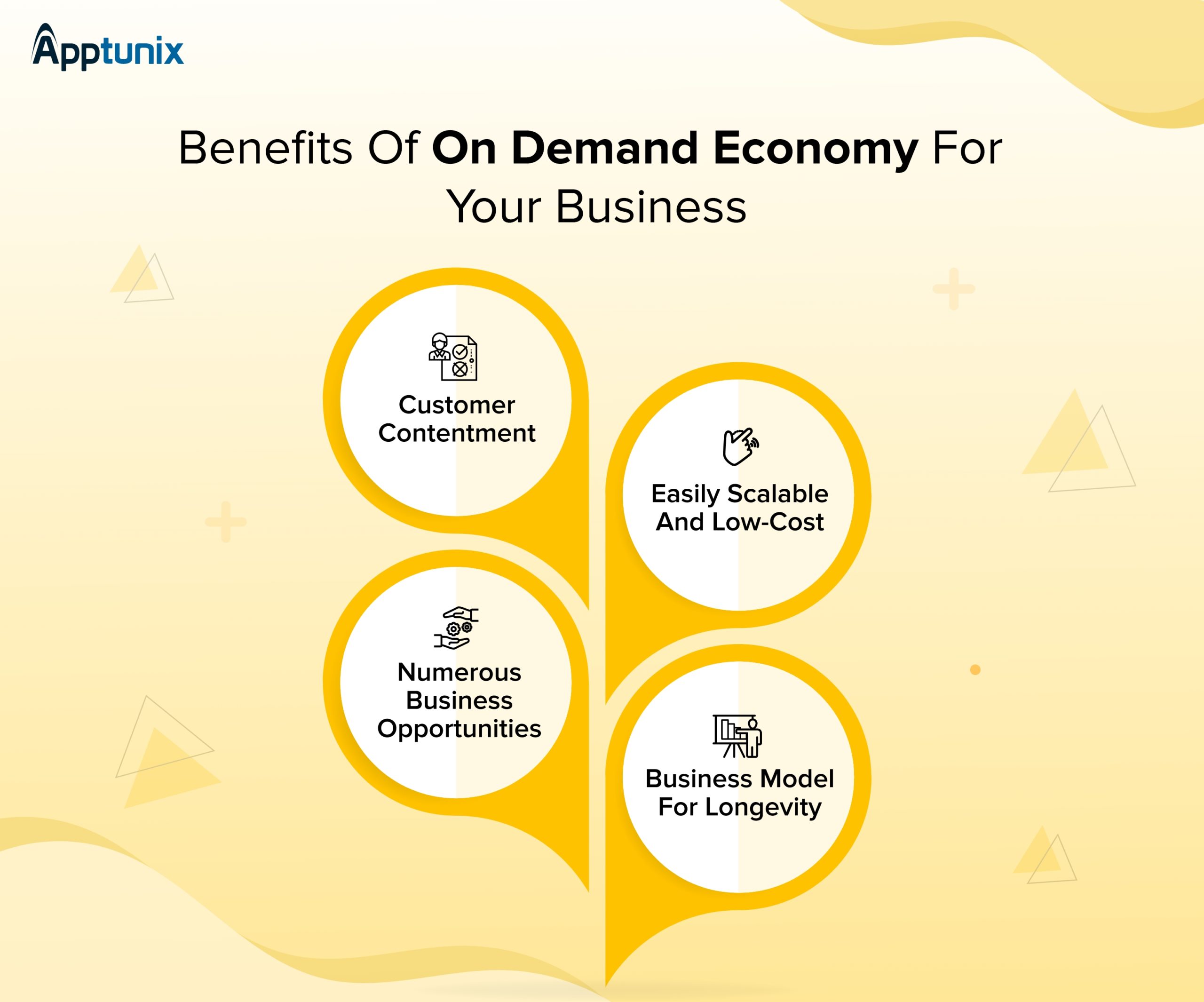
Customer Satisfaction
This is one of the most significant advantages of the on-demand business. The expectations of today’s customers are different. They have resources to investigate, research, and evaluate before making a single buying choice. They are more advanced.
They desire a personalized experience and prompt attention to their demands. In today’s global market, customer happiness is crucial.
On-demand services enable organizations to meet the demands of their consumers in a more efficient, cost-effective, and timely manner. In the peer to peer approach, both providers and customers interact, communicate, and collaborate to ensure the greatest customer service.
Easily Scalable And Reduced Cost
The cost-effectiveness of this strategy is one of the reasons why corporations favor it. The on-demand economy enables enterprises to start and run at a lower cost than the traditional business model. Starting a business is simple thanks to third party marketplaces and the underlying structure of technologies.
There is no need to hire and train employees, nor is there any need to invest in infrastructure setup, because technology assists in the establishment of your business. Technology also makes scaling easier since it allows you to have an online presence using the SaaS model and increase resources on-demand.
Countless Business Opportunities
You will have a larger network and more opportunities to build your business. To boost a company’s visibility, you must reach out to a big number of people. There are currently a number of marketplaces where you may register your business and begin selling products/offering services.
Sustainable Business Model
This economy promotes environmentally friendly methods such as reuse, recycling, decentralized logistics, self-organized business operations, and more flexibility. This is advantageous for small enterprises and freelancers. Renting and reusing can help to reduce pollution and resource usage.
Features And Technologies Required For On Demand Apps
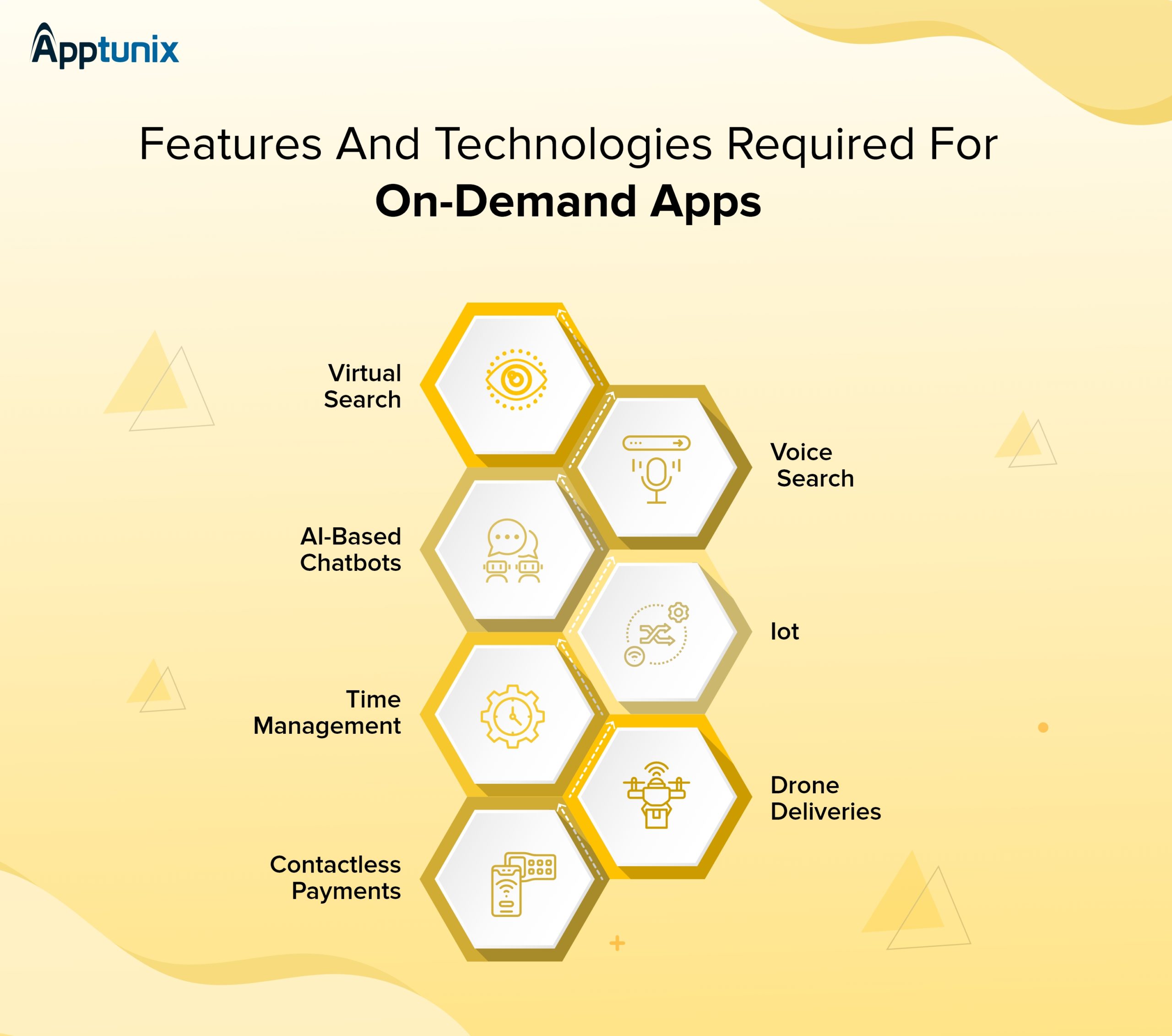
Virtual search
Consumers typically use several keywords to search for the same goods. In many cases, people know what they want but are unable to express it effectively.
Visual search integration into retail purchasing apps is a cost-effective way to address client requests. They can print web screen images or take real-life photos, and the system will offer the most accurate match to your range.
Voice Search
Voice search and navigation are two features that might help an app get to the top. Voice searches account for 20% of all searches, according to Google, and this number is anticipated to climb. The software will recognize numerous languages and dialects thanks to artificial intelligence’s ability to create hyperlocal features.
AI-Based Chatbots
A chatbot driven by artificial intelligence is the coolest way to reach out to clients if something goes wrong or they need assistance on products and services. This technology has evolved to the point that it resembles a human person.
It’s also cheaper because companies don’t have to pay customer service representatives on a monthly basis.
Internet Of Things
The Internet of Things is gaining traction, and software development for this sector has a lot of possibilities. In the future, smart devices will measure health parameters, with the user being able to see the results and recommendations on their smartphone.
Drone Deliveries
It’s a compliment to contactless interaction, which Amazon and other behemoths have already experimented with.
The next generation of applications will need to be connected with logistics operations and contain capabilities like genuine delivery tracking.
Time Management
It’s a supplement to the contactless interaction that Amazon and other behemoths have previously looked at. However, it’s feasible that seeing drones delivering coffee in the morning may become commonplace in the future years. The next generation of applications will need to be integrated with logistics systems and incorporate features such as real-time delivery tracking.
Contactless Payments
We the rise of the fintech industry and the revolution of peer-to-peer payments. When employing blockchain technology, financial transactions are extremely secure and quick. Consumers will purchase, get a bill, and pay using an app that must connect with payment systems in the near future, rather than utilizing traditional POS terminals.
Wrapping Up
So those were the key figures we were able to analyze and gather from a variety of reliable sources. As you can see, the growth of on demand delivery apps is unavoidable, and the sooner you grasp this, the better. We propose getting in contact with us if you’re seeking an appropriate on-demand delivery app solution.
We’ll assist you with conceiving, developing, and launching the greatest version of your on demand app possible. Contact us right away.

Rate this article!
Join 60,000+ Subscribers
Get the weekly updates on the newest brand stories, business models and technology right in your inbox.

You can say, I am an internet surfer. I’m fascinated with marketing and its new trends. With a background in Information Technology, I also like to be aware of the technological advancements around me. Apart from that, you can find me listening to music as I am a huge music lover.

Telemedicine 2.0 - A Comprehensive Guide On What Healthcare Providers Need To Know?
Discover how the latest advancements like Artificial Intelligence in telemedicine are reshaping patient care. This comprehensive resource offers insights into the key trends and innovations driving this shift, providing valuable knowledge for healthcare professionals looking to stay ahead.
Download Now!Subscribe to Unlock
Exclusive Business
Insights!
And we will send you a FREE eBook on 'Mastering Business Intelligence.
